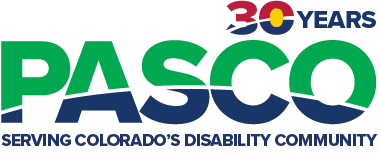Muscular dystrophy isn’t one specific disease, but instead the name refers to a group of diseases that affect a person’s muscles over time. These inherited diseases are caused by a genetic mutation where a protein called dystrophin is missing. This leads to many physical and cognitive challenges. The disease is often diagnosed during early childhood, but some forms of muscular dystrophy can develop in adulthood.
What is Muscular Dystrophy?
Muscular dystrophy is a term that refers to several neuromuscular disorders. These disorders progressively weaken a person’s muscles so that common tasks like walking, swallowing and breathing can become difficult. When a person has muscular dystrophy, their body lacks the proteins needed to form healthy muscles. It can affect people of all ages, races, and genders, but different forms of muscular dystrophy commonly affect people in different ways.
Duchenne/Becker Muscular Dystrophy (DMD/BMD)
- Duchenne and Becker muscular dystrophy are the most common disorders, affecting 14 in 100,000 males ages 5-24 each year. This disorder is typically diagnosed in early childhood and affects males most often. People with Becker muscular dystrophy typically have milder symptoms and the disease progresses much more slowly than Duchenne muscular dystrophy. Since they have very similar symptoms, these two diseases are typically referred to as DBMD.
Facioscapulohumeral (FSHD)
- FSHD typically begins in early adulthood, but it can appear in late adulthood when a person is in their 50s. It affects both genders equally and symptoms usually begin when a person complains of weakness in their face, hips and shoulders.
Myotonic (DM)
- Myotonic muscular dystrophy affects both males and females and only affects around 8 in 100,000 people each year. People with DM often have trouble relaxing their muscles when they contract and they have distinct features like long, thin faces, long necks and droopy eyelids.
Congenital (CMD)
- CMD is unique because it is typically diagnosed at birth or before a baby is two years old. It can progress slowly and can sometimes cause mild disabilities. In other cases, the disease can progress very quickly, causing severe impairment in both male and female children.
Limb-Girdle (LGMD)
- People with LGMD are usually diagnosed in childhood or as teenagers and both genders can be affected. Oftentimes, they’re first diagnosed when they appear clumsy, since they have difficulty lifting the front part of their feet. This disease also initially affects the hips and shoulder muscles.Distal (DD), Oculopharyngeal (OPMD) and Emery-Dreifuss (EDMD) muscular dystrophy are other forms of this disease that each affect less than 1 person per 100,000 each year.
What are the Risk Factors of Muscular Dystrophy?
Muscular dystrophy is an inherited disease. This means a person’s parents pass the genes for the disease to their children when a mother becomes pregnant. It affects people of all ages, races and sexes, but males are much more likely to have Duchenne muscular dystrophy, the most common type and it is typically diagnosed in early childhood.
People with a family history of muscular dystrophy are at a higher risk of having children with the disease that causes genetic mutations.
What are the Symptoms of Muscular Dystrophy?
According to the Mayo Clinic, there are many symptoms of muscular dystrophy that usually develop in early childhood between ages three and six. Depending on the type of muscular dystrophy that a person inherits, they may have slightly different symptoms that can begin in early adulthood and even later in life. Here are some of the most common symptoms that a person can develop with muscular dystrophy.
If a person is diagnosed with Myotonic muscular dystrophy, they may also have trouble relaxing their muscles when they contract.
What Other Health Conditions are Associated with Muscular Dystrophy?
Oftentimes, people with muscular dystrophy have other health conditions. Some of them include:
How Can a Family Caregiver Assist Someone with Muscular Dystrophy?
There is no cure for muscular dystrophy, but there are many medications and therapy options available to help your loved one manage their symptoms. As a Family Caregiver, you can provide the needed services and supports that can assist your loved one with their activities of daily living.
If you’re caring for someone with muscular dystrophy, it’s important to educate yourself, take care of your own needs and know that you’re not alone. PASCO’s Family Caregiver Program was created to support people like you by reimbursing them for their time spent caring for their loved ones with lifelong diseases. If you’re interested in learning more about our program, contact us today.

Family Caregiver Program
In 2001, PASCO’s founder Barry Rosenberg initiated the creation of the Family Caregiver Program in Colorado. Today, family caregivers can be reimbursed for some of the time they spend giving care to loved ones with cerebral palsy.
To learn more about the program and caring for people with cerebral palsy, contact us at any convenient time.

